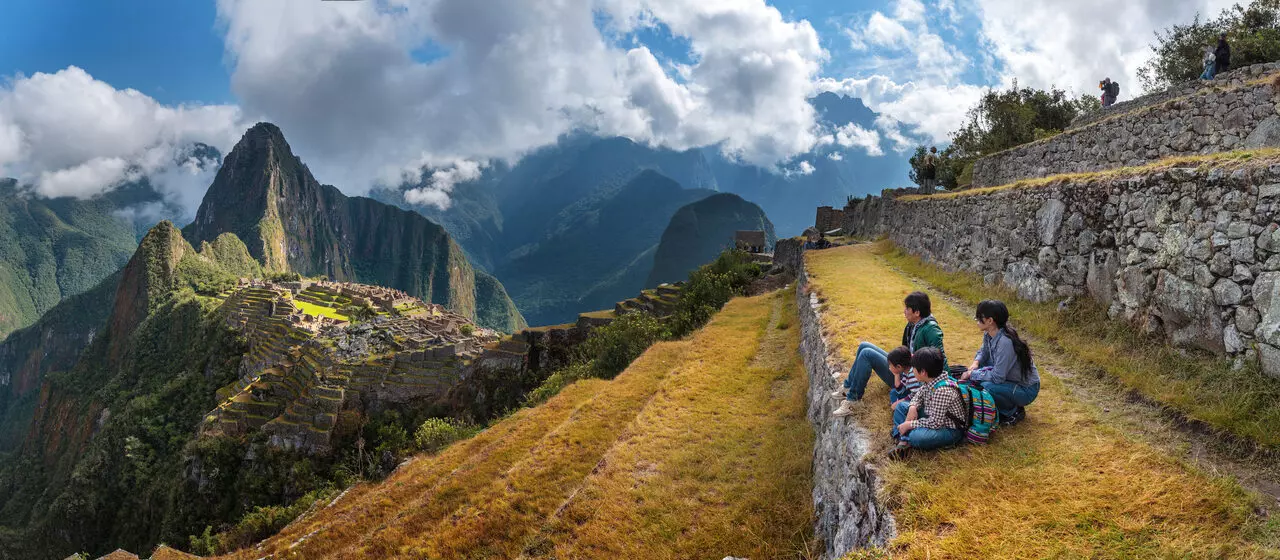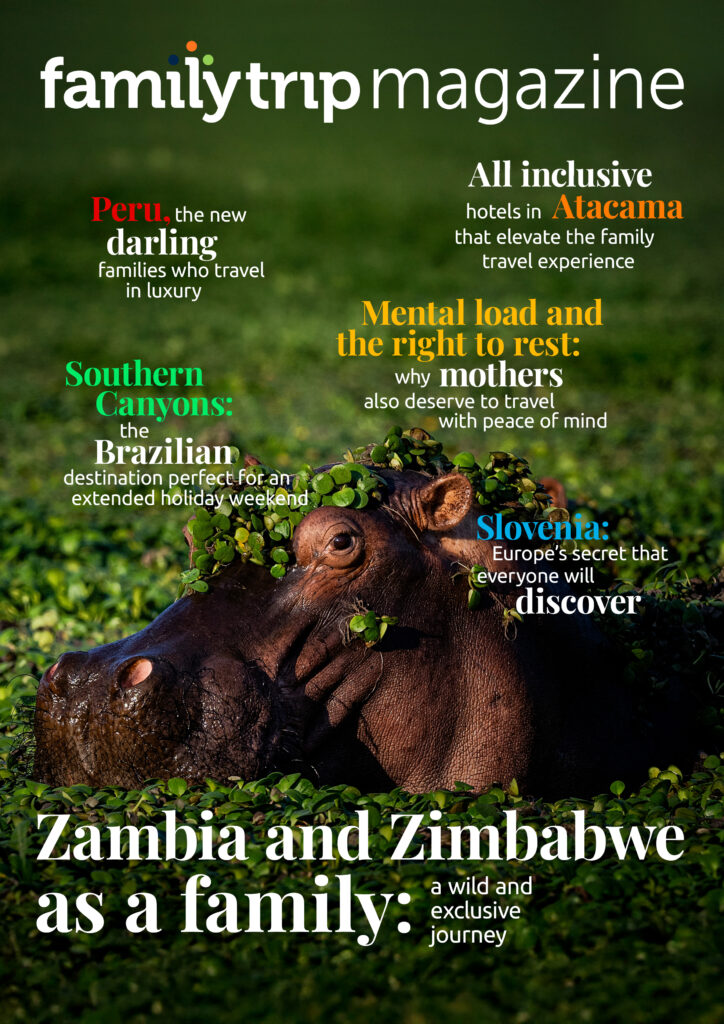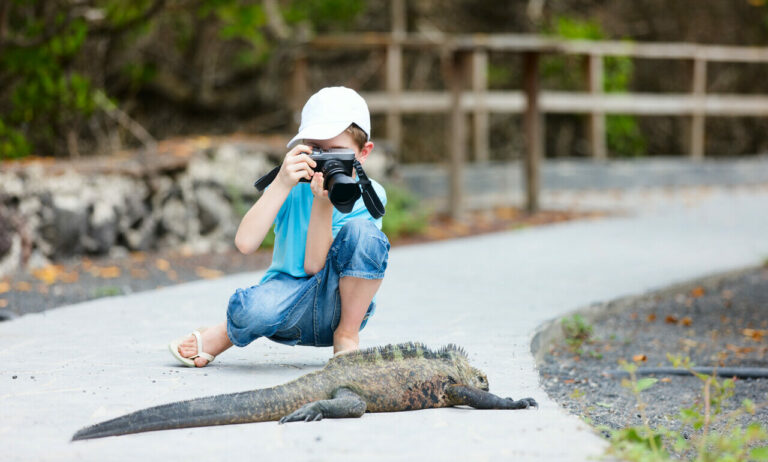
- Inspiring trip
Traveling to Peru with children an teenagers in a playful and fun way for the whole family
From the mysterious ruins of Machu Picchu to the colorful cities of Cusco and Lima, there’s so much to discover and learn. Let’s embark on this journet together!
By Claudine Blanco
Peru is a land filled with nature, history, mysteries, legends, and mysticism. A unique country where past and present coexist amid an incredible diversity of picturesque landscapes and echoes of ancient civilizations’ cultures. Despite being undeniably a fascinating destination for families seeking unforgettable adventures, many question whether it’s worth traveling to Peru with children and therefore keep postponing the trip, waiting for them to grow up a bit more. However, what they don’t consider is that it’s especially in the age range between 6 and 11 years that imagination is at its peak, making this precisely the best phase to transform this trip into a fun and joyful family exploration.
While children visit intriguing archaeological sites, they learn about Inca history and wisdom in a playful and fun way with expert historian guides, exploring up close the millennial constructions that challenge human ingenuity. Everywhere you see the friendly llamas, customarily decorated with colorful typical accessories. Children love interacting with these camel family animals and stopping to take photos. When they discover that this curious ruminant can spit if it doesn’t like you, they get even more excited about the adventure of approaching it.
For adventure lovers, there are many outdoor activity options that can be done in the Sacred Valley. These, by the way, are usually teenagers’ favorites! The whole family can have fun biking, quad biking, and kayaking through beautiful landscapes. For the more audacious, highlights include the possibility of rappelling and sleeping in a hotel that has a capsule-style room in the heights, imitating a Condor’s nest.
Few destinations in the world have the potential to surprise and entertain a family so much while simultaneously awakening such strong interest in different cultures and their history in children and teenagers as Peru does. This South American jewel is a sure bet for those with children of various age ranges seeking a different and stimulating trip that will strengthen family bonds even more.
Machu Picchu, declared by UNESCO as Cultural and Natural Heritage of Humanity, is undoubtedly the main Peruvian attraction, drawing tourists from all parts of the world. However, the country also has historic cities with colonial architecture, diverse natural landscapes, and cultural richness full of traditions perpetuated through generations, spread across multiple destinations with tourist appeal for all tastes and profiles.
To make the itinerary even more playful and fun for family audiences, there’s the option to include experiences like gastronomy and art workshops, offered by some family specialist agencies, such as Viajar com Crianças and Viajar com Adolescentes. Such agencies even organize group departures of families to the country, where participants have the opportunity to have even more fun by making friends with other travelers of the same profile and age range.
Lima

Due to air connections, most itineraries usually begin or end with a short stay in Lima, Peru’s capital. The city has a historic center full of attractions, plus it’s the best place to explore the flavors of typical Peruvian cuisine, especially in the Miraflores neighborhood, with many excellent quality restaurants.
Peruvian gastronomy is world-famous and little ones can also be inspired to try it, discovering new flavors. To stimulate them even more, there’s the possibility of experiencing an authentic gastronomic experience through a tour where you visit a traditional market and choose ingredients that the family will use together to prepare a “lunch-class.”
Another appeal of Lima for kids is that the city houses the Magic Water Circuit, the world’s largest fountain complex, with light and music shows. The park visit can be done privately so children can play there at their own pace.
The Larco Museum houses an impressive ceramic collection that tells more than 5,000 years of ancient Peru’s history. The visit is unmissable for everyone, and it’s possible to hire a special family program with interactive activities and games for children aged 3 to 12 years.
Cusco

Besides being the gateway to Machu Picchu, Cusco is a true cultural treasure that offers numerous opportunities for families to explore and be enchanted by Peru’s rich heritage. In local museums, visitors can dive into the country’s history and art, discovering fascinating relics dating back to Inca times and beyond. From archaeological artifacts to contemporary exhibitions, there’s something for all tastes and ages, providing an educational and enriching experience for children and teenagers.
Gastronomy also plays a fundamental role in cultural immersion in Cusco. Local restaurants offer a variety of typical Peruvian dishes, allowing travelers to experience authentic flavors of Andean cuisine. Families can enjoy delicious meals while learning about ingredients and traditional techniques that make Peruvian food so unique and tasty.
Furthermore, craft shops in Cusco are true paradises for souvenir lovers. In them, visitors can find various handmade products, including decorative ornaments, toys, textiles, jewelry, musical instruments, and much more, all crafted with skill and care by local artisans. It’s a perfect opportunity to acquire special memories and support the local community.



Sacred Valley

The Sacred Valley of the Incas, located in the Peruvian Andes, is a geographically and culturally significant region that played a fundamental role in Inca civilization. Called “sacred” due to its religious and agricultural importance to the Incas, the valley is surrounded by imposing mountains and cut by the Urubamba River, creating stunning and fertile landscapes. Historically, this region was a vital agricultural center for the Incas, providing essential foods like corn and potatoes. Because of this, many of the most impressive Inca ruins are located in this valley, including the cities of Pisac, Ollantaytambo, and Chinchero, which served as important administrative, religious, and agricultural centers during the Inca Empire.
In the Sacred Valley of the Incas, villages of farmers and weavers preserve their ancestral customs and traditions practically unchanged to this day. The place reserves many points of interest for children and teenagers, which can be visited with strategic pit stops along the route to have contact with local people, their customs, and their rich craftsmanship. For those who can invest in a private guide, the experience becomes even more kid-friendly, as the pace can be adjusted to the little ones’ interest and disposition.
One of the most interesting stopping points along the route is the village of Pisac, whose popularity has grown significantly lately, not only thanks to its famous archaeological complex but also because of its vibrant artisan market.
In this immense street market, there’s a sea of wooden stalls that spread their colors between Plaza de Armas and the small streets around the historic center. During the week, craft vendors reign; on Sundays, there’s also an abundance of typical food stalls, highlighting organic fruits and vegetables grown in the valley. By exploring the colors and flavors of Pisac Market, families have the opportunity to experience more intimate contact with native people’s habits and customs, being able to be enchanted by the richness of Peruvian culture, cuisine, art, and textile production.
The Sacred Valley is definitely one of the best places to experience the country’s typical and traditional cuisine. It’s practically unanimous success among tourists of all ages to delight in corn, the world’s largest grain, a wide variety of native potatoes served with sauces prepared with delicious Andean cheeses, and the unique highland bread, made with seeds that don’t exist anywhere else in the world.
A classic experience to live local culture through taste is participating in a theatrical lunch, where visitors are entertained with the graceful marinera dance and a presentation of Peruvian paso horses. But the gastronomic experience that perhaps surprises most is an outdoor picnic-style lunch, prepared with local products, which can be organized privately for families in a place of special scenic beauty, such as a viewpoint framed by the Urubamba mountain range, overlooking Huaypo and Piuray lagoons. There are options for all tastes, from more gourmet proposal picnics to vegan picnics.
The Sacred Valley’s varied geography, which yields unusual landscapes, is another great highlight, being an invitation for families wanting to venture outdoors exploring the region’s natural beauty. Well-marked trails allow visitors to practice trekking without difficulty, passing through viewpoints, ancient archaeological sites, and picturesque villages. Horseback riding is a popular way to explore the valley, offering panoramic views of mountains and green valleys. Bicycle tours are also successful, with trails suitable for all skill levels. Water activities like kayaking and stand-up paddling are popular for those who like to refresh themselves. Additionally, quad biking provides an electrifying way to explore remote valley areas, with winding roads and off-road trails available for the more adventurous.
Machu Picchu

The farewell to the Sacred Valley happens in grand style when the itinerary, right in sequence, continues with travel to Machu Picchu, the famous “lost city of the Incas.” Standing before one of the seven new wonders of the world indisputably tends to be the trip’s highlight for almost all travelers – and little ones are no exception to this equation. Its history full of mysteries, combined with the adventure of visiting it, give it enormous appeal for children and teenagers.
The fun already begins on the train journey, which is an exciting experience, especially for kids. Along the route, with comfortable cars and wide windows that allow appreciating the surrounding natural beauty, you enjoy panoramic views of the natural landscape. The train journey can also offer onboard entertainment, such as local musicians playing traditional Peruvian songs or even educational activities related to Machu Picchu’s history, making the journey even more captivating for young travelers. Besides that, the expectation of reaching the Incas’ lost city increases with every minute of the journey on rails, creating an atmosphere of excitement and curiosity that infects the whole family. As they approach the final destination, everyone can barely contain their emotion to finally explore the historic site and unravel Machu Picchu’s secrets. Thus, the train journey reveals itself not just as transportation but as an integral part of the experience.
After disembarking, the walk to the viewpoint that reveals majestic Machu Picchu is also an incredibly exciting experience. Although it’s a steep trail in some sections, it’s generally feasible for little ones, especially if accompanied by adults and having their own pace respected. The surrounding landscape is a spectacle in itself, with photogenic views of mountains, lush vegetation, and the river winding below. Words don’t do justice to the emotion of spotting Machu Picchu for the first time, framed by this natural scenery. It’s as if history comes to life before your eyes, with the energy emanating from this sacred place being almost palpable from the first moment.
South America’s most famous archaeological site maintains many of its original characteristics preserved on the mountains to this day, being a true open-air history class, especially enriching for school-age visitors. Walking through the “lost city of the Incas,” living for a few hours the experience of diving into history and recording this moment in one of Earth’s most admired postcards is, without doubt, unforgettable.
To enhance the tour even more – especially for those traveling with children – private guide accompaniment is highly recommended, as this allows the family to explore the ruins at their own pace, plus hear tons of mystical stories and curiosities about the place. One of them, which little ones love, is discovering that the mountain behind Machu Picchu, called “Huayna Picchu,” has the shape of a face looking at the sky.
Exploring Machu Picchu’s ruins is much more than just a tourist tour; it’s a unique opportunity to experience the history of one of the world’s most fascinating civilizations in a totally immersive and engaging way. And for travelers who are still in their formative phase, this experience can be truly transformative, leaving lasting memories that will inspire them throughout their lives.
Ballestas Islands
There’s no denying the fascination that exotic animals exert on children and teenagers. It’s a unique experience to see wild creatures up close, awakening curiosity and enchantment. Better than going to a zoo, visiting the Ballestas Islands, located in southern Peru, offers an exceptional opportunity to observe Peruvian fauna in its natural habitat.
For older ones who already have biology knowledge, this proximity to animals is even more captivating. When spotting sea lion colonies and thousands of migratory birds during a boat tour of the Ballestas Islands, they have the chance to apply their theoretical knowledge in a real and dynamic environment, enriching their understanding of wildlife.
The spectacle offered by the Ballestas Islands is truly impressive and educational. Besides providing moments of fun and admiration for kids, this experience also promotes awareness about the importance of environmental preservation and marine species protection. It’s a unique opportunity to connect with nature and create unforgettable family memories.
Nazca Lines
As a bonus, along the way, you can see the mysterious giant drawing “El Candelabro,” made on a hillside, mentioned in various pirate legends. Visible from the sea, pointing toward land, its meaning has never been discovered for certain. Some specialists say it was used as a reference by pirates to hide their treasures; others say it’s related to Nazca figures, indicating the path to follow to find them inland. The curious thing is that the candelabra symbol appears in various ceramics and fabrics of the civilization that lived in Paracas, demonstrating that it could have a ritualistic connection to that people’s beliefs.
The Nazca Lines and Ballestas Islands are close to each other, and it’s possible to visit them on the same trip, in a 3-day itinerary extension from Lima, based in the coastal city of Paracas, which houses a natural reserve of the same name.
Is it worth going to Peru with children and teenagers?
Definitely, traveling to Peru with children and teenagers is an experience worth it in every aspect. It’s a journey full of opportunities to explore, learn, and have fun as a family. It’s much more than a simple adventure; it’s an opportunity to connect with a rich and diverse culture, create unforgettable family memories, and nurture the spirit of discovery and learning.
Additionally, it’s a trip that provides a unique chance to teach children about respect and appreciation for different cultures. By interacting with local people and learning about their millennial customs, young travelers can develop a deeper understanding of the world around them. By exploring Peru’s historical treasures, stunning landscapes, and unique flavors, families not only strengthen their affective bonds but also enrich their lives with experiences that will last throughout their existence. It’s a journey that enriches body, mind, and spirit, leaving an indelible mark on all who experience it.

How long to stay in Peru:
Planning the ideal time in each destination is fundamental to guarantee a complete and gratifying experience. Spending two nights in Lima allows an introduction to Peru’s vibrant capital, while three nights in Cusco provide enough time to explore the region’s rich culture and history.
The Sacred Valley and Machu Picchu deserve four nights, allowing complete immersion in the majesty of Inca ruins and landscapes that yield photographs from countless angles.
Finally, two nights in Paracas allow exploring the mysterious Nazca Lines and appreciating marine life diversity in the Ballestas Islands.
When to go to Peru – best time:
Regarding the best time to travel, Peru offers a variety of experiences throughout the year. In the dry season, from April to October, days are sunny and ideal for exploring ruins and trails.
During the rainy season, from November to March, landscapes become greener and more lush, while some areas may be affected by intense rains.
However, regardless of the season, each season in Peru offers its own magic and beauty, making the country an enchanting destination year-round.
Things the Way Family love to pack in their suitcase:
Gate
Eletronics for the travel: smartphone, drone, câmera, charger,…
Destiny
UV clothes, bikinis, caps, diving goggles, snorkel mask and other accessories…

















